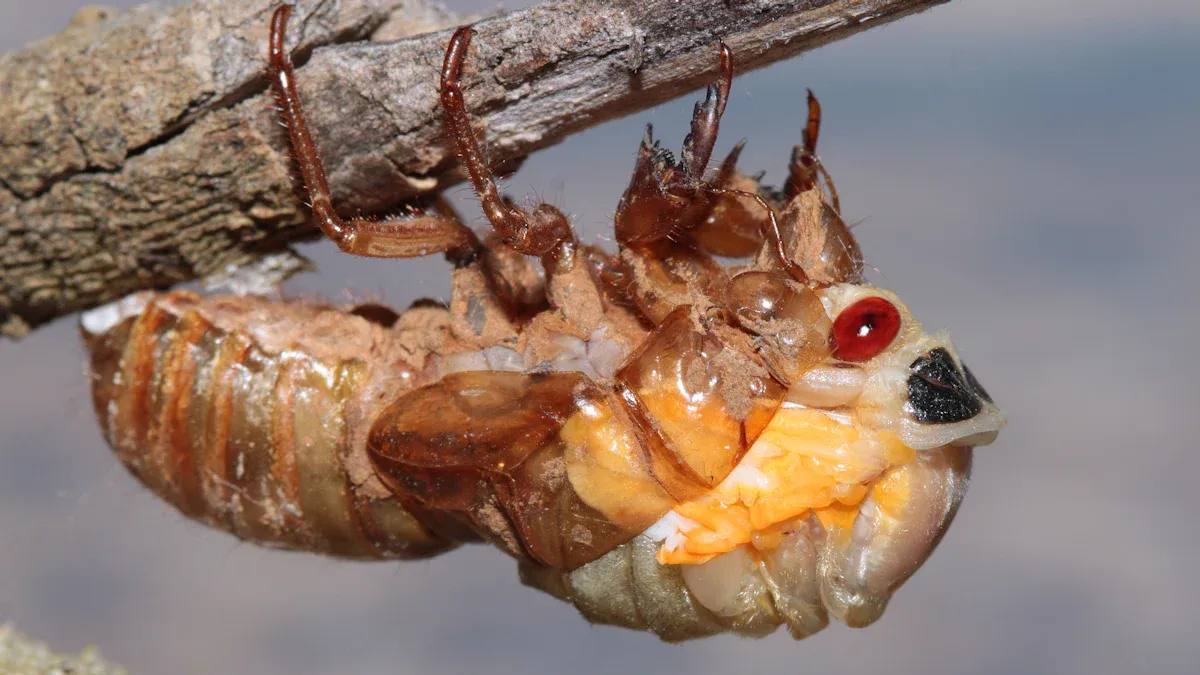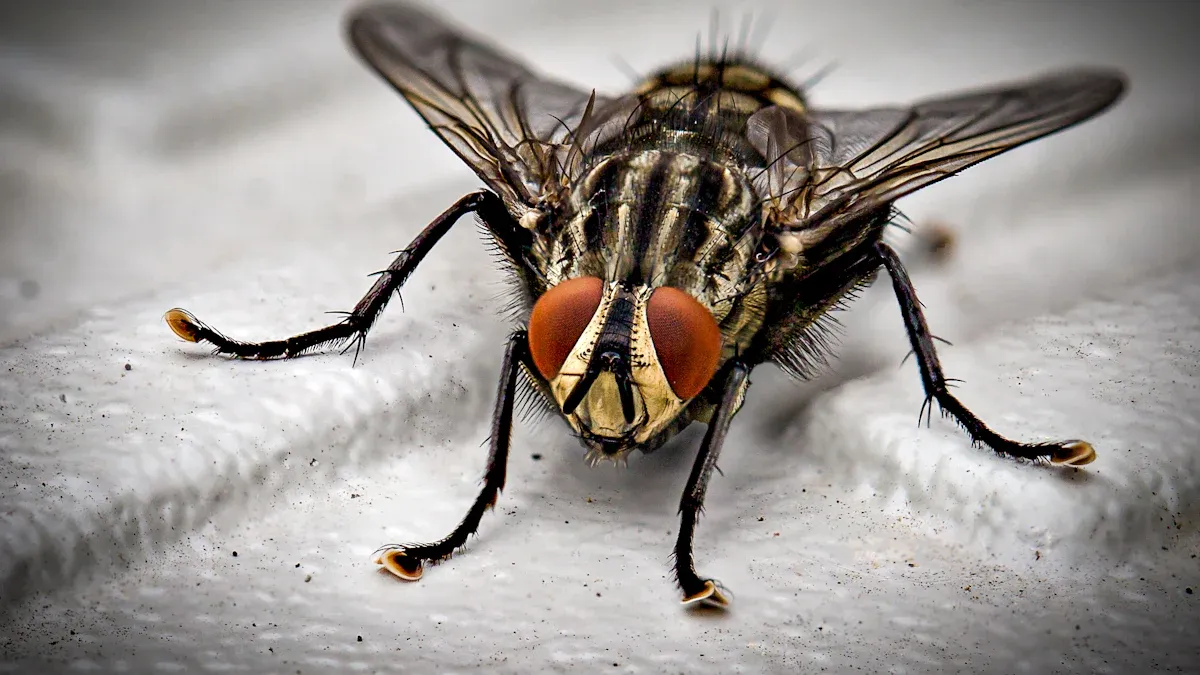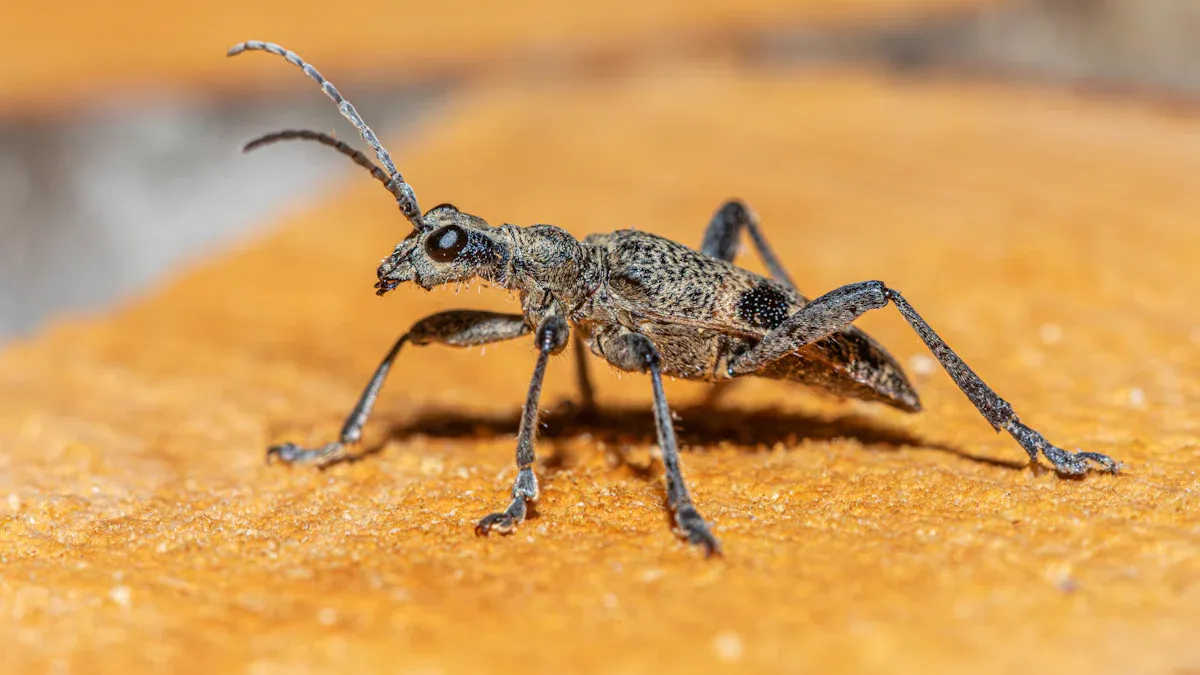
Red maple trees play a vital role in many landscapes. Their vibrant fall colors and shade make them popular among homeowners and landscapers. However, pests can significantly impact the health of your red maple. Infestations can lead to reduced growth, compromised vitality, and even death of the tree. Early identification of pests is crucial. You can protect your tree’s longevity by recognizing signs of trouble and treating infestations promptly. For example, the pest Lycorma delicatula threatens red maples and can cause severe damage if left unchecked.
Key Takeaways
Regularly inspect your red maple tree for signs of pests like yellowing leaves, sticky residue, and galls. Early detection is key to preventing severe damage.
Use effective treatment methods for common pests. For example, rinse aphids with water and consider insecticidal soap for beetles and mites.
Maintain your tree’s health through proper watering, pruning, and fertilization. Healthy trees are less vulnerable to pest infestations.
Introduce beneficial insects like ladybugs to naturally control aphid populations. Planting pest-repellent species nearby can also help.
Stay vigilant and monitor your tree at least once a month, especially during the growing season. This proactive approach ensures your red maple remains vibrant and healthy.
Common Maple Tree Pests

Red maple trees face threats from several common pests. Early identification of these pests is crucial for maintaining the health of your tree. Here are some of the most prevalent pests you should watch for:
Aphids
Aphids are small, soft-bodied insects that can cluster on the undersides of leaves. They feed on sap, which can lead to yellowing leaves and stunted growth. You may notice a sticky substance called honeydew on the leaves, which can attract sooty mold. If you see these signs, act quickly to control the infestation.
Scale Insects
Scale insects are another significant threat to red maples. They attach themselves to branches and leaves, sucking sap and weakening the tree. Two common species include:
Species Name | Description |
|---|---|
Gloomy Scale (Melanaspis tenebricosa) | A native armored scale that affects red maple, causing plant decline and branch dieback. |
Cottony Maple Scale (Pulvinaria innumerabilis) | Known to reach high populations on red maple, also affecting other maple species and various trees. |
Symptoms of scale infestations include twig and branch dieback, thinning foliage, and a bumpy white texture on branches. You might also notice honeydew and cottony egg sacs on the tree. Early detection can prevent severe damage.
Beetles
Beetles, particularly the Asian longhorned beetle (Anoplophora glabripennis), pose a significant threat to red maple trees. This invasive species primarily targets red maples and has established populations in areas like Worcester County, Massachusetts. Their feeding damages the bark and wood, weakening the tree and increasing its susceptibility to other pests and diseases.
The impact of beetle infestations can be severe:
Impact of Beetle Infestation on Red Maple Trees | Description |
|---|---|
Feeding Damage | Beetles chew through the bark and into the wood layers, weakening the tree. |
Increased Susceptibility | Infested trees become more vulnerable to other pests and diseases. |
Structural Integrity Risk | Weakened trees pose a fall risk to passers-by and can lead to tree death. |
Mites
Mites are tiny pests that can cause significant damage to red maple trees. The maple bladder gall mite creates bladder-like galls on leaves, while erineum or felt gall mites produce velvety patches. You may notice galls appearing as green or red fuzzy patches on both the upper and lower surfaces of leaves.
To control mite populations, consider these methods:
Monitor plants for pests to prevent outbreaks.
Increase plant diversity in your landscape to discourage mites.
Avoid over-fertilizing, especially with nitrogen.
Water your trees when needed to minimize stress.
Remove weeds that can harbor mite populations.
You can also physically remove some mites by rubbing leaves with your fingers or using a strong jet of water.
By identifying these common maple tree pests early, you can take proactive steps to protect your red maple. Regular monitoring and timely interventions can help ensure your tree remains healthy and vibrant.
Pest Identification for Red Maple Trees

Identifying pests early can save your red maple tree from severe damage. You should look for specific symptoms that indicate an infestation. Here are some common signs to watch for:
Chewed leaves
Discolored or wilted leaves
Sticky residue on leaves
Galls and abnormal growths
Bark damage
Frass or sawdust
Branch dieback
Exit holes
Root and crown rot
Defoliation
Each type of pest may cause different symptoms. For example, aphids suck sap from leaves, leading to yellowing and wrinkling. Scale insects also suck juices, which can stress the tree and cause foliage death. Beetles bore into the tree, potentially causing severe damage and even death by girdling the trunk. Mites, like spider mites, cause discoloration and galls on leaves but usually do not harm the tree’s overall health.
Visual Identification Techniques
Visual identification techniques can help you diagnose pest infestations. However, be cautious. While these methods can be useful, their accuracy may vary. For instance, photo-based plant identification apps can sometimes misidentify pests. Therefore, you should combine visual observations with other methods for the best results.
To visually identify pests on your red maple, follow these steps:
Inspect Leaves: Look for discoloration, holes, or galls. Check both the upper and lower surfaces.
Examine Branches: Look for sticky residue, frass, or any unusual growths on branches.
Check for Exit Holes: These may indicate beetle activity. If you see small holes in the bark, investigate further.
Monitor for Honeydew: This sticky substance often indicates aphid or scale infestations.
By regularly checking your tree for these signs, you can catch infestations early. This proactive approach helps maintain the health of your red maple and prevents more significant issues down the line.
How to Care for a Red Maple Tree
Caring for your red maple tree involves both treatment methods for existing pests and preventive measures to keep your tree healthy. By understanding how to care for a red maple tree, you can ensure its longevity and beauty.
Treatment Methods
When you notice pests on your red maple, prompt action is essential. Here are effective treatment methods for common pests:
Pest Type | Treatment Methods |
|---|---|
Beetles | Remove dead limbs, spray with water, and use insecticidal soap for Japanese beetles. |
Mites | Prune damaged foliage, spray with water, and treat with insecticidal soap (be cautious with Japanese maples). |
Scales | Prune and water regularly, remove scales with a water spray, and consider horticultural oil as a last resort. |
Aphids | Rinse with water, treat with insecticidal soap, and introduce beneficial insects like lacewings and ladybugs. |
These methods can effectively reduce pest populations and help restore your tree’s health. Remember, treating aphids early can prevent them from spreading and causing more damage.
Preventive Care
Preventing pest infestations is just as important as treating them. Here are some key practices for keeping your red maple healthy:
Maintain the health of your red maple by regularly pruning, watering, and fertilizing to prevent scale infestations.
Introduce beneficial insects like ladybugs and parasitic wasps as natural deterrents.
Erect a 6-to-8-foot fence or wrap the trunk with a guard to protect against deer and small mammals.
Plant species that repel deer and small mammals, such as marigolds and garlic, near the trees.
Encourage good health to prevent beetle infestations by ensuring adequate watering and planting trap plants like geraniums and marigolds.
To prevent mite infestations, ensure the tree is well-hydrated and plant mite-repellent plants like basil and garlic nearby.
Regular pruning also plays a crucial role in maintaining tree health. It removes dead or damaged branches, improving air circulation and reducing disease risk. Pruning at the right time, such as mid-summer, minimizes sap loss and stress on the tree.
Effective soil management supports your red maple’s growth. It ensures access to essential nutrients and moisture levels, which contributes to the overall vitality and health of your tree.
By combining treatment methods with preventive care, you can significantly enhance your red maple tree’s resilience against pests and diseases. Keeping your red maple healthy requires vigilance and proactive measures, but the rewards are well worth the effort.
Regular monitoring of your red maple tree is essential. Pests like aphids and diseases such as Verticillium wilt can threaten its health. By keeping a close eye on your tree, you can spot signs of trouble early. This vigilance helps maintain the long-term health of your red maple.
Timely treatment of pest infestations enhances the aesthetic value and longevity of your tree. Regular inspections for wilting leaves or unusual growth patterns can prevent severe damage. Stressed trees are more vulnerable to pests, so addressing issues promptly reduces stress and improves overall health.
Take proactive steps in caring for your red maple tree. With attention and care, you can ensure its beauty and vitality for years to come.
FAQ
What are the signs of a pest infestation on my red maple tree?
Look for yellowing leaves, sticky residue, galls, or chewed foliage. You may also notice branch dieback or unusual growths. Regular inspections help you catch these signs early.
How can I prevent pests from infesting my red maple tree?
Maintain tree health through proper watering, pruning, and fertilization. Introduce beneficial insects and plant pest-repellent species nearby. Regular monitoring also helps you spot issues before they escalate.
What should I do if I find scale insects on my tree?
Remove scales with a strong water spray. Prune affected branches and consider using horticultural oil as a last resort. Regularly monitor your tree to prevent future infestations.
Are there natural predators for aphids?
Yes! Ladybugs and lacewings are natural predators of aphids. You can attract these beneficial insects by planting flowers like dill and yarrow near your red maple tree.
How often should I inspect my red maple tree for pests?
Inspect your tree at least once a month, especially during the growing season. Regular checks help you identify and address pest issues before they cause significant damage.

